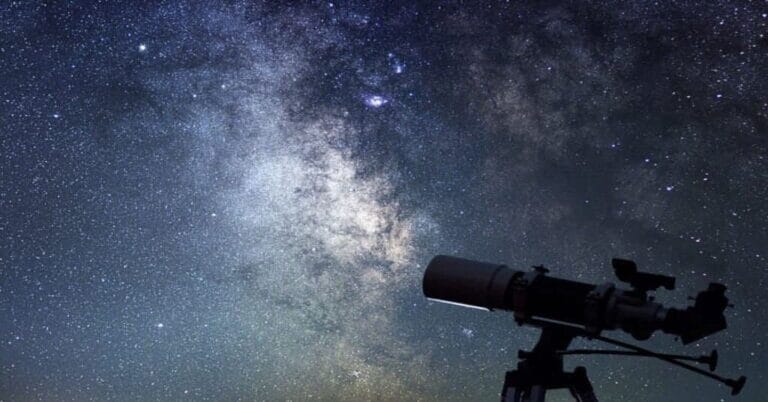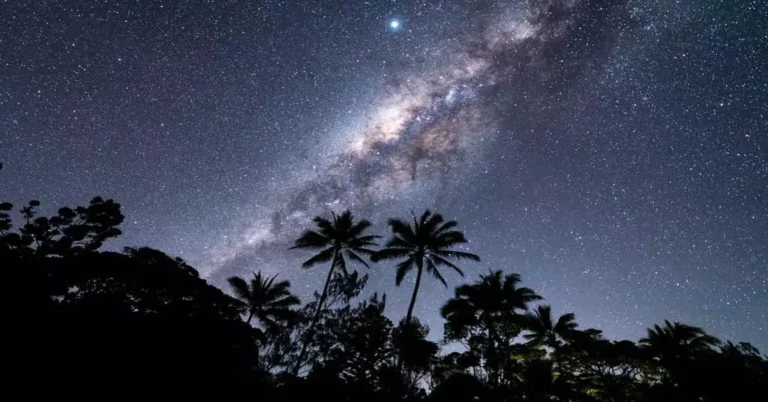Affordable Astrophotography Equipment Gear You Can Afford
Have you ever gazed at the night sky and been blown away by all the stars? Taking pictures of these amazing sights, called astrophotography, is a cool way to keep those memories forever. But guess what? You don’t need a fancy telescope or cash to get started! With just some knowledge and easy-to-find gear, you can dive into astrophotography without spending much.
But here’s the thing: you need really dark skies to get the best pictures. Big cities have lots of bright lights that can hide the stars. So, before you get all set up, check out maps and apps that show where the sky is darkest. Places like national parks or faraway spots are usually perfect for this. For more tips on finding the ideal locations, you should consult our astrophotography guide.
Essential Gear for Budget Astrophotography
Here’s the good news: you can get started with astrophotography using equipment you might already own!
Camera:
You have two main options for astrophotography cameras: DSLRs and mirrorless cameras. DSLRs usually last longer on a single charge, while mirrorless ones are lighter and more portable. However, finding a camera that lets you control the settings manually and performs well in low light really counts.
Using What You’ve Got: If you’ve got an old DSLR or mirrorless camera lying around, that’s perfect! Even a basic one can snap stunning shots of the starry sky with the right settings.
Lens:
A telephoto lens is your best bet to zoom in on things like galaxies or nebulae. Look for one with a focal length of around 200mm or more and a wide aperture (f/2.8 or lower) to gather lots of light.
Making Do with What You Have: No telephoto lens? No problem! A regular zoom lens can still capture amazing shots of the Milky Way. Aim for wider focal lengths (around 18mm) to capture more of the night sky in one shot.
Wide-Angle Fun: Want to capture the whole Milky Way in all its glory? Wide-angle astrophotography is perfect, and you don’t need a fancy telescope.
Tripod:
It would help if you had a tripod for astrophotography. Even the steadiest hands can’t keep the camera still for the long exposures to capture faint stars. Ensure you get a sturdy tripod supporting your camera and lens. Look out for features like vibration dampening to help get those crisp shots.
Optional Gear for Enhanced Astrophotography (Consider Upgrading Later)
As you get deeper into astrophotography, you might want to add some extra tools to your kit:
Star Tracker
Ever notice how stars seem to move across the sky? Star trackers help with that. They’re mounts that move with the Earth so you can take longer exposure shots without those pesky star trails. There are fancy ones called equatorial mounts (super precise but pricey) and simpler ones called barn door trackers (a bit less accurate but more wallet-friendly).
Intervalometer/Remote Shutter Release
These gadgets are super useful for taking lots of shots over time. They let you set your camera to take pictures at regular intervals, which is crucial for stacking images later on (more on that soon). Some cameras have this feature built-in, but if you still need to, you can grab an affordable remote shutter release or even use apps on your smartphone.
Additional Tips for Success
Now that you have your gear ready, here are some additional tips to ensure your astrophotography adventures are fruitful:
Understanding the Big Three: Shutter Speed, ISO, and Aperture
Understanding how to manipulate the “Big Three” camera settings—shutter speed, ISO, and aperture—is crucial for successful astrophotography. Here’s details
- Shutter Speed: Picture the camera sensor as a gate that opens and closes to let in light. Shutter speed decides how long this gate stays open. Longer times mean more light hits the sensor, which is vital for capturing faint stars and nebulae. But there’s a twist: Earth spins. If your shutter opens too long, stars blur into trails. That’s where star trackers help by moving with Earth’s rotation.
- ISO is like cranking up your camera’s light sensitivity. Higher values mean the sensor picks up fainter objects even with shorter shutter times. But beware: raising the ISO can introduce noise and grainy stuff that clutters your pictures. Finding the sweet spot between light and noise is key.
- Aperture: it can control how much light enters your camera through the lens. It’s a fraction like f/2.8 or f/5.6. Wider apertures (lower numbers) let in more light, which will be great for astrophotography. But be cautious: sharpness varies with your lens and aperture choice.
Experimentation is Key
The ideal combination of shutter speed, ISO, and aperture will depend on various factors, such as the specific object you’re photographing, the darkness of your location, and your lens capabilities. The best way to learn is to experiment and find what works best for your setup. Be bold, take multiple test shots, and adjust your settings accordingly.
| Setting | Description | Impact on Astrophotography |
| Shutter Speed | Length of time the camera sensor is exposed to light. | Longer shutter speeds allow more light to be captured, but can also lead to star trails. |
| ISO | Sensor’s sensitivity to light. | Higher ISO allows you to capture faint objects with shorter shutter speeds, but introduces noise. |
| Aperture | Width of the lens opening that controls light intake. | Wider aperture (lower f-number) lets in more light, but sharpness can vary depending on the lens. |
Post-Processing:
Digital editing takes your astrophotography to the next level. Simple tricks like reducing noise and stacking images (blending multiple exposures) can reveal hidden details in your raw shots. Luckily, plenty of free or affordable software is out there for adjusting your pics, so feel free to experiment and see what works best for you!
Conclusion
Astrophotography doesn’t have to be an expensive hobby. With creativity and resourcefulness, you can capture breathtaking night sky images using readily available equipment. Remember, the most important thing is to get out there, experiment, and learn from the amazing astrophotography community. There are countless resources, tutorials, and forums online. Why not tap into them and start your astrophotography journey today?
FAQs
Can I do astrophotography without a telescope?
Absolutely! You can capture stunning starry nightscapes and even some deep-sky objects with a DSLR or mirrorless camera and a wide-angle lens.
What’s the most important thing for astrophotography?
Dark skies are the most important thing for astrophotography. Light pollution from cities washes out faint celestial objects. Using light pollution maps, look for locations with minimal light interference.
Do I need a fancy camera?
Not necessarily! A basic DSLR or mirrorless camera can capture beautiful astrophotography with the right settings.
What’s the deal with star trackers?
Star trackers help compensate for the Earth’s rotation, allowing you to take longer exposures without star trails. They’re great but optional for starting.
What about editing my astrophotography images?
Simple post-processing techniques like noise reduction and image stacking can significantly enhance photos. There are many free or affordable software options available.







